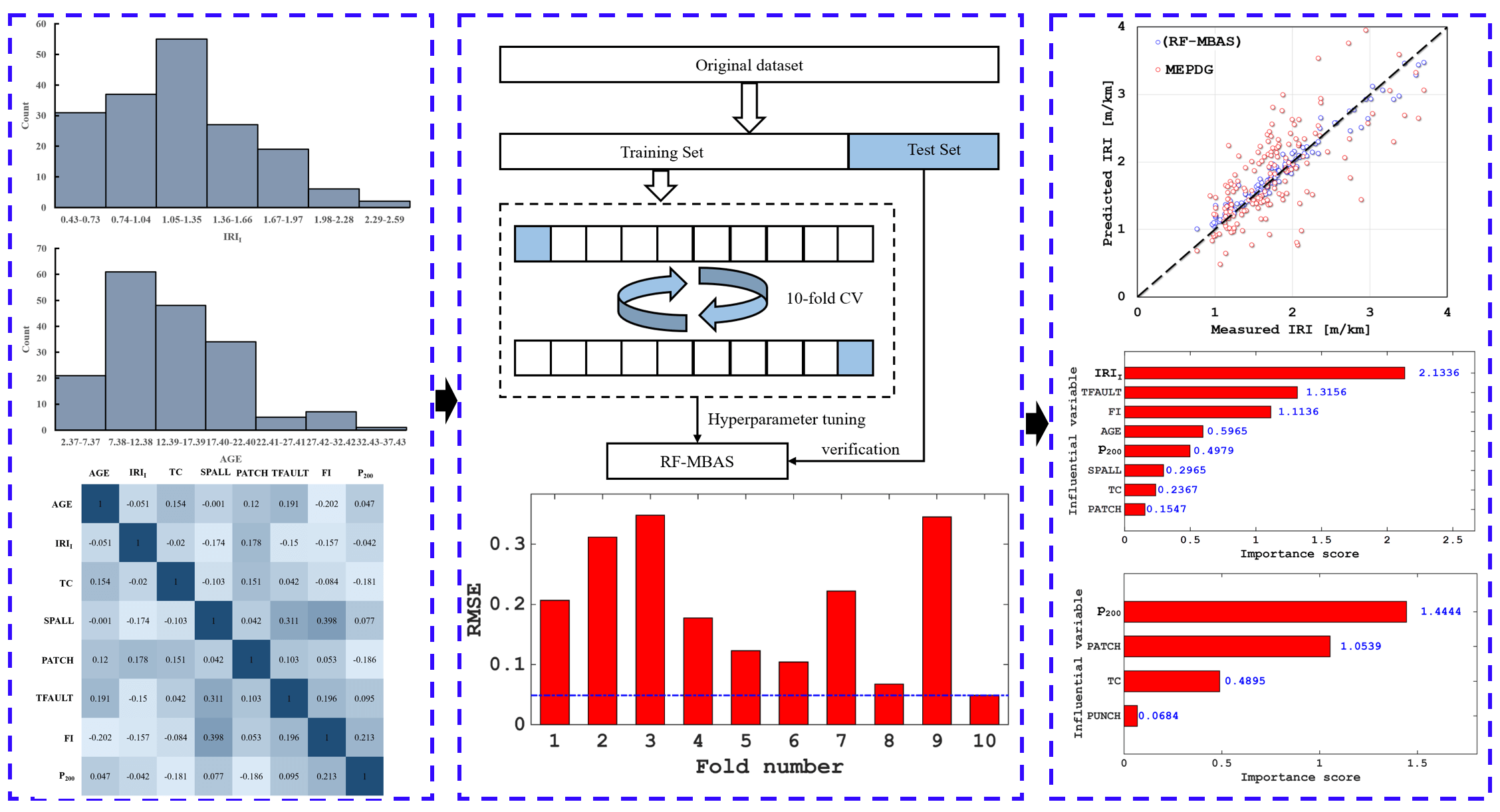 Open Access
Open Access
ARTICLE
Predicting the International Roughness Index of JPCP and CRCP Rigid Pavement: A Random Forest (RF) Model Hybridized with Modified Beetle Antennae Search (MBAS) for Higher Accuracy
1 College of Civil and Environmental Engineering, Hunan University of Science and Engineering, Yongzhou, 425006, China
2 School of Mines, China University of Mining and Technology, Xuzhou, 221116, China
3 School of Civil Engineering, Guangzhou University, Guangzhou, 510006, China
* Corresponding Author: Jiandong Huang. Email:
(This article belongs to the Special Issue: Meta-heuristic Algorithms in Materials Science and Engineering)
Computer Modeling in Engineering & Sciences 2024, 139(2), 1557-1582. https://doi.org/10.32604/cmes.2023.046025
Received 15 September 2023; Accepted 30 October 2023; Issue published 29 January 2024
Abstract
To improve the prediction accuracy of the International Roughness Index (IRI) of Jointed Plain Concrete Pavements (JPCP) and Continuously Reinforced Concrete Pavements (CRCP), a machine learning approach is developed in this study for the modelling, combining an improved Beetle Antennae Search (MBAS) algorithm and Random Forest (RF) model. The 10-fold cross-validation was applied to verify the reliability and accuracy of the model proposed in this study. The importance scores of all input variables on the IRI of JPCP and CRCP were analysed as well. The results by the comparative analysis showed the prediction accuracy of the IRI of the newly developed MBAS and RF hybrid machine learning model (RF-MBAS) in this study is higher, indicated by the RMSE and R values of 0.2732 and 0.9476 for the JPCP as well as the RMSE and R values of 0.1863 and 0.9182 for the CRCP. The accuracy of this obtained result far exceeds that of the IRI prediction model used in the traditional Mechanistic-Empirical Pavement Design Guide (MEPDG), indicating the great potential of this developed model. The importance analysis showed that the IRI of JPCP and CRCP was proportional to the corresponding input variables in this study, including the total joint faulting cumulated per KM (TFAULT), percent subgrade material passing the 0.075-mm Sieve (P200) and pavement surface area with flexible and rigid patching (all Severities) (PATCH) which scored higher.Graphic Abstract

Keywords
Cite This Article
 Copyright © 2024 The Author(s). Published by Tech Science Press.
Copyright © 2024 The Author(s). Published by Tech Science Press.This work is licensed under a Creative Commons Attribution 4.0 International License , which permits unrestricted use, distribution, and reproduction in any medium, provided the original work is properly cited.


 Submit a Paper
Submit a Paper Propose a Special lssue
Propose a Special lssue View Full Text
View Full Text Download PDF
Download PDF Downloads
Downloads
 Citation Tools
Citation Tools